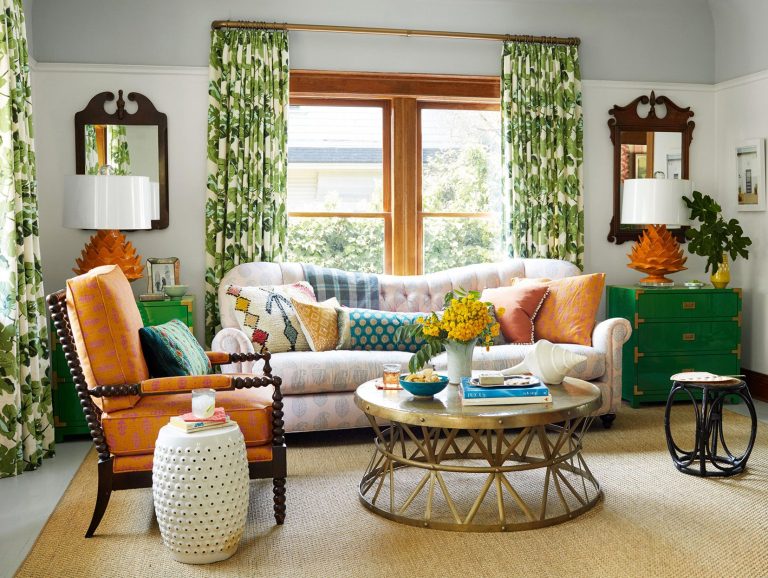Transforming a new house into a home is a delightful but often daunting task. Effective painting and decorating can set the tone for your living space, creating an ambiance that reflects your style while ensuring comfort.
Here are comprehensive tips for painting and decorating your new home.
Planning and Preparation
- Assess Your Space: Before you begin, take the time to assess each room’s dimensions and natural lighting. Consider how colors and decorations will change with daylight and artificial light.
- Color Schemes: Choosing a suitable color scheme can influence mood and perception of space. Soft, light colors can make small rooms feel bigger and brighter, while dark tones can add depth and sophistication to larger spaces. Use color wheels or design apps to help visualize the final look.
- Budgeting: Set a realistic budget for painting and decorating. This should include costs for materials, professional services if hired, and any new furniture or decor. Remember to keep a cushion for unexpected expenses.
Hiring Professionals
While DIY projects can be rewarding, hiring professionals can save time and ensure high-quality results. When selecting contractors, consider credible professionals like the movers in Philadelphia, PA, or similar locations who offer expert services in handling and moving your belongings.
This will make the transition into your new home smoother and allow you to focus more on the decorating aspect.
However, in addition to moving professionals, it is also an excellent idea to look for painters and decorators with positive reviews and solid references.
Check their previous work, verify licenses, and ensure they have insurance to cover any potential damages. Once you choose your contractors, communicate your vision. Provide them with inspirational images, preferred color palettes, and specific deadlines to ensure everyone is on the same page.
Choosing Paint and Materials
- Quality Over Quantity: Invest in high-quality paint as it tends to go smoother, offers better coverage, and lasts longer. Consider eco-friendly and low-VOC paints to maintain better indoor air quality.
- Test Samples: Before committing to a color, buy sample paint pots. Apply them on different walls and observe how they change under varying lighting conditions throughout the day.
- Essential Tools: Before starting your project, gather all necessary tools and materials, including brushes, rollers, painter’s tape, drop cloths, and more.
Effective Painting Techniques
- Surface Preparation: Proper preparation can significantly impact the quality of your painting. Ensure surfaces are clean, dry, and smooth. Repair any holes or cracks and sand down uneven surfaces.
- Priming: Priming is crucial for achieving a professional look, especially when making drastic color changes or painting over high-gloss finishes.
- Painting Method: Employ the proper painting techniques. Use rollers for large, flat surfaces and brushes for edges and finer details. Apply multiple thin coats rather than a single thick coat for even coverage.
Decorating Strategies
- Focal Points: Designating focal points in each room can help draw attention and anchor the space. Choose striking elements that reflect your style, such as a vibrant piece of art, an antique coffee table, or an eye-catching light fixture. These focal elements serve as conversation starters and influence the arrangement of other items in the room.
- Mix and Match: To add depth and intrigue to your interiors, combine various textures and patterns. This approach can transform a flat-looking space into a dynamic area. Some ideas include blending shiny metallic elements with rustic wood textures, integrating different fabric types like smooth silk with rougher linen, and experimenting with geometric and floral rug patterns to add layers to your floor space.
- Lighting: Proper lighting is crucial for setting the mood and enhancing the usability of each room. Use a combination of lighting types, such as overhead lighting for general illumination, ambient lighting to create a warm glow during the evening, and task lighting in areas like reading nooks or over kitchen counters.
- Accessorizing: Accessories are the finishing touches that unify a room’s design. They offer flexibility as they can be easily updated to refresh the room’s look without a significant overhaul. Consider incorporating soft cushions and throw blankets in vibrant colors or interesting patterns, drapes that complement the overall color scheme, and artworks that reflect your tastes and personality.
Sustainability in Decor
- Upcycling: Consider repurposing old furniture or decor items. This saves money and gives your home a unique character.
- Eco-friendly Choices: Opt for sustainable and eco-friendly decor options where possible. This includes materials like bamboo, recycled glass, and organic cotton.
- Energy Efficiency: When updating fixtures or appliances, choose energy-efficient options. This reduces your home’s carbon footprint and can offer savings on utility bills.
Final Touches
- Personalization: Personal touches make a house feel like a home. Display personal items such as photos, heirlooms, or collections in a way that complements your new decor.
- Room by Room: Approach decorating room by room. This prevents the process from becoming overwhelming and allows you to budget and plan more effectively for each space.
- Stay Flexible: Your taste and needs might evolve, so keep your decor adaptable. Allow room for updates and changes that might come with living in your new space.
Takeaway
Painting and decorating your new home is an exciting journey expressing your style and creating a welcoming environment for all who enter. With careful planning, suitable materials, and thoughtful touches, your new house will soon feel like a proper home.

